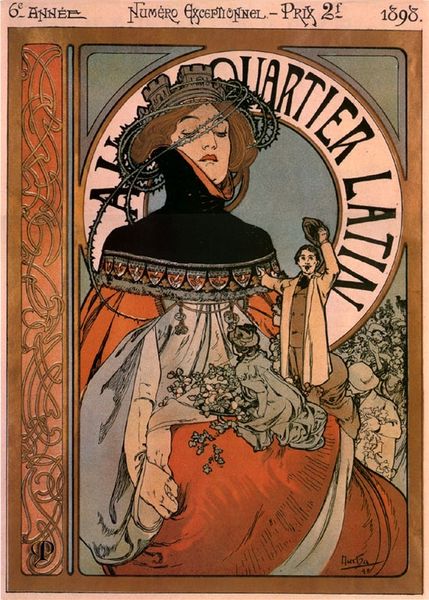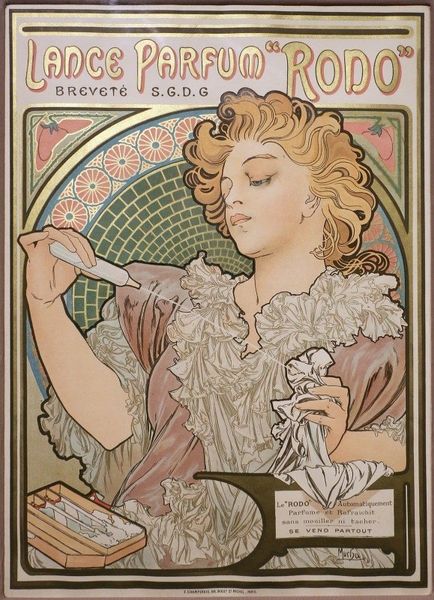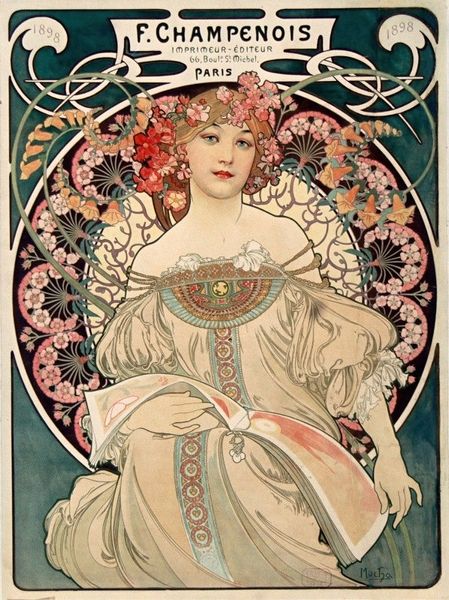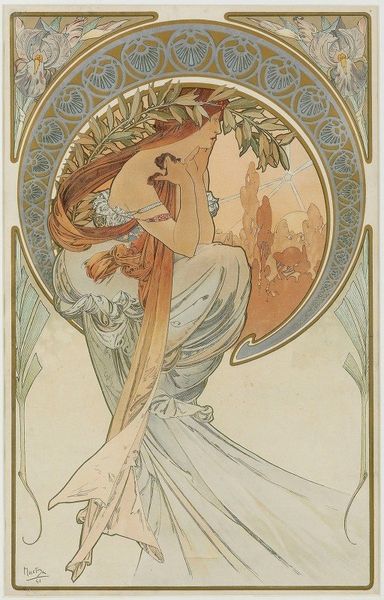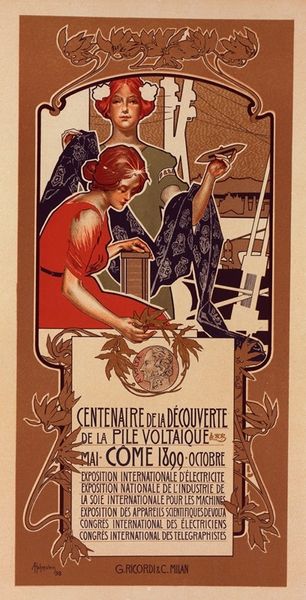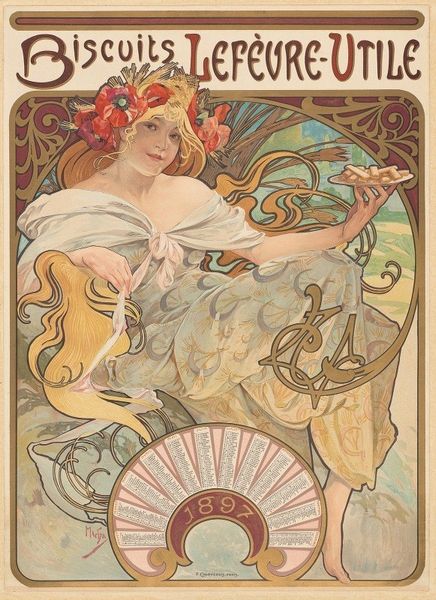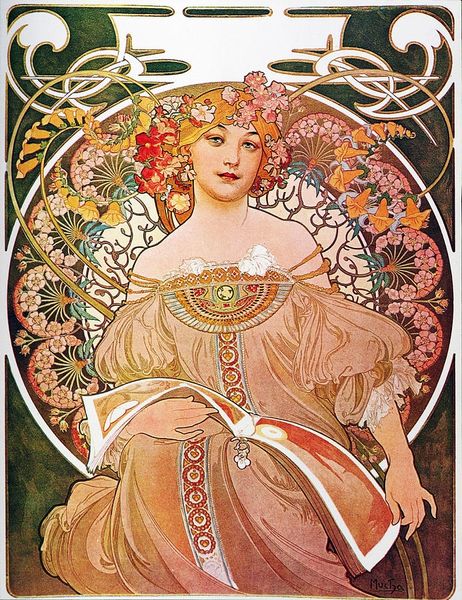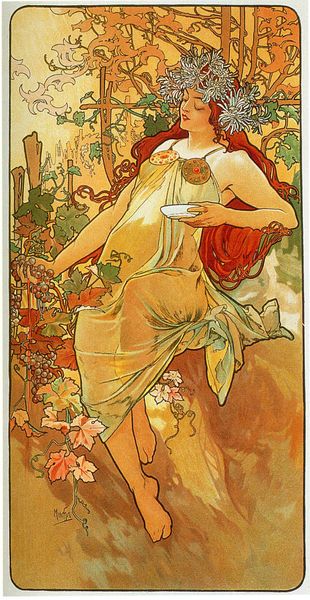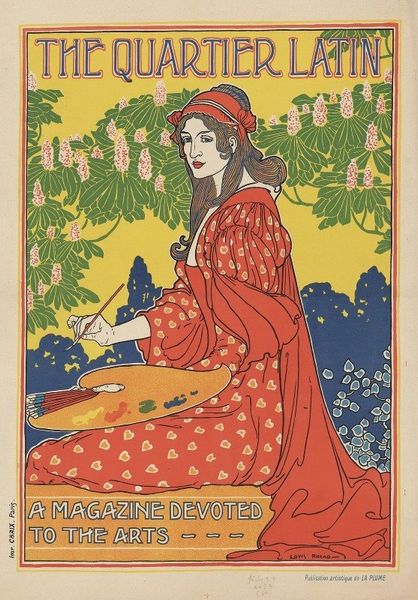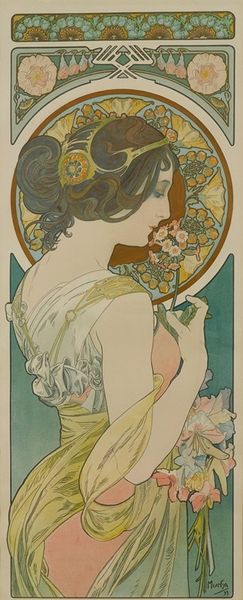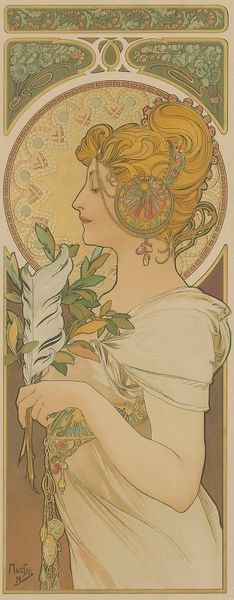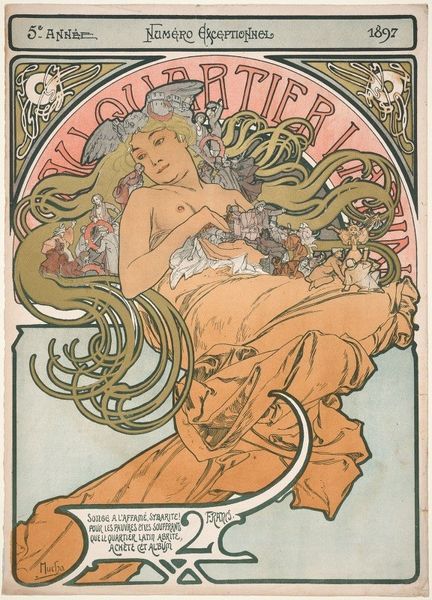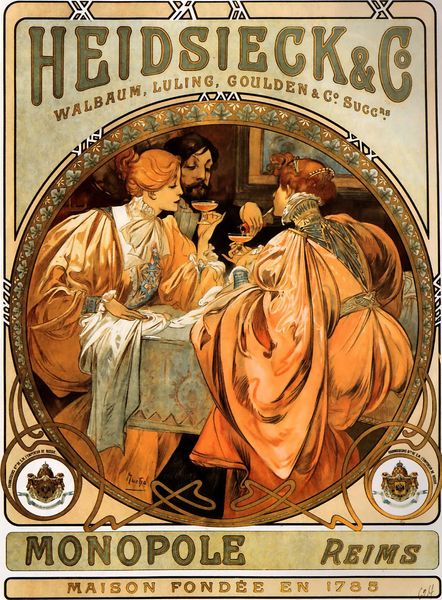
lithograph, print, poster
#
portrait
#
art-nouveau
#
lithograph
# print
#
figuration
#
orientalism
#
cityscape
#
decorative-art
#
poster
Copyright: Public Domain: Artvee
Curator: This is Alphonse Mucha’s 1903 lithograph poster, “Exposition Universelle et Internationale de St. Louis." Editor: It’s so striking. The central female figure draws me in, but there’s also an interesting interplay between the Art Nouveau style and what seems to be a figure representing Native Americans in the background. What exactly do you see in this piece, beyond just a beautiful advertisement? Curator: I see a complex negotiation of power and representation, deeply embedded within the colonial project. Notice how the idealized, European female figure, representing France, dominates the composition, while the Indigenous figure is relegated to the background. What does that positioning suggest about whose narrative is centered? Editor: It does seem like the French figure is prioritized, almost as a symbol of progress and civilization, overshadowing the Indigenous presence. But why include the Indigenous figure at all? Curator: Ah, there's the rub! The inclusion speaks to the exhibition’s theme: global connection, but on whose terms? The Indigenous figure becomes an exoticized "other," a spectacle displayed for the Western gaze. Think about how these world's fairs were used to legitimize colonial expansion, presenting it as a benevolent endeavor. Does that framing complicate your initial reaction? Editor: Absolutely. It challenges the aesthetic beauty. I initially saw Art Nouveau elegance, but now I can't ignore the uncomfortable power dynamics it subtly reinforces. The lithograph medium itself, made for mass distribution, amplifies that reach of these skewed representations. Curator: Exactly. The mass reproduction reinforces this colonial vision of the world for broad consumption. By situating this piece within the history of colonialism and representation, we can critically examine not just what is shown, but *how* it is shown, and whose interests are being served. Editor: I never would have considered the loaded politics of promotional posters like this! Curator: Seeing these intersections illuminates our present, too, prompting us to critically assess imagery and power structures within society. Editor: Absolutely. Thanks so much for expanding my understanding.
Comments
No comments
Be the first to comment and join the conversation on the ultimate creative platform.
